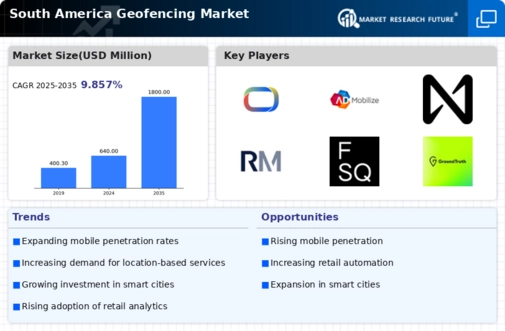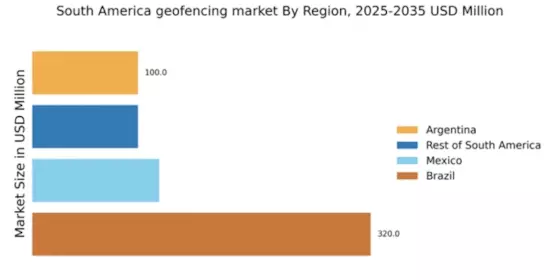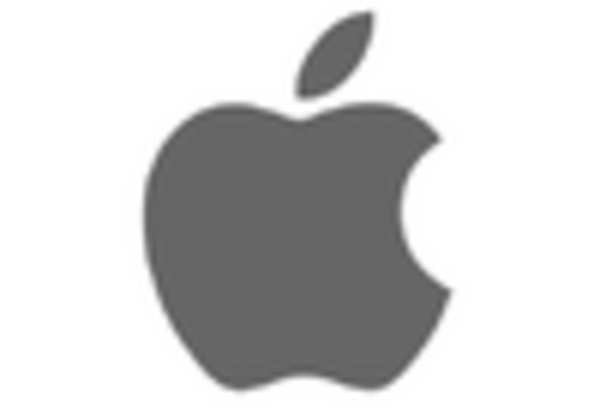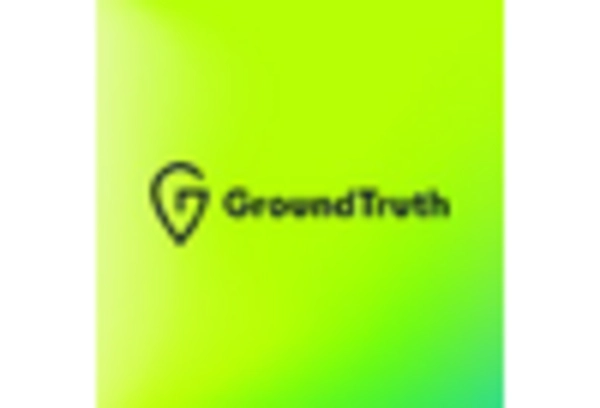Growth of E-commerce Platforms
The rapid growth of e-commerce platforms in South America is significantly influencing the geofencing market. With online shopping becoming more prevalent, retailers are adopting geofencing technology to enhance customer experiences and streamline operations. In 2025, e-commerce sales in South America are expected to surpass $100 billion, reflecting a substantial increase in consumer spending online. This growth presents an opportunity for businesses to utilize geofencing for targeted promotions, real-time inventory updates, and personalized shopping experiences. By integrating geofencing solutions, retailers can effectively engage customers at critical touchpoints, thereby increasing conversion rates and customer satisfaction. As e-commerce continues to evolve, the demand for innovative technologies like geofencing is likely to rise, driving further investment in this market.
Expansion of Mobile Advertising
The rise of mobile advertising in South America is a crucial driver for the geofencing market. As smartphone penetration continues to increase, businesses are leveraging geofencing technology to target consumers with location-based promotions. In 2025, mobile advertising expenditure in South America is projected to reach approximately $10 billion, indicating a robust growth trajectory. This trend suggests that companies are increasingly recognizing the value of personalized marketing strategies, which can enhance customer engagement and drive sales. The ability to deliver timely offers based on a user's location not only improves the effectiveness of marketing campaigns but also fosters brand loyalty. Consequently, the expansion of mobile advertising is likely to propel the demand for geofencing solutions, as businesses seek to optimize their marketing efforts and capitalize on the growing mobile user base.
Increased Focus on Location-Based Services
The growing emphasis on location-based services (LBS) in South America is a significant driver for the geofencing market. Businesses across various sectors, including retail, transportation, and hospitality, are increasingly recognizing the value of LBS in enhancing customer engagement and operational efficiency. In 2025, the LBS market in South America is anticipated to reach approximately $5 billion, highlighting the potential for growth in this area. By leveraging geofencing technology, companies can deliver personalized experiences, optimize logistics, and improve customer service. This trend indicates a shift towards more data-driven decision-making, where location data is utilized to inform business strategies. As the demand for LBS continues to rise, the geofencing market is likely to experience substantial growth, driven by the need for innovative solutions that cater to evolving consumer expectations.
Rising Demand for Enhanced Customer Engagement
The increasing demand for enhanced customer engagement in South America is a key driver for the geofencing market. As businesses strive to build stronger relationships with their customers, geofencing technology offers a unique opportunity to deliver personalized experiences based on location. In 2025, it is estimated that companies investing in customer engagement strategies will allocate over $15 billion towards innovative technologies, including geofencing. This investment reflects a growing recognition of the importance of understanding consumer behavior and preferences. By utilizing geofencing, businesses can create targeted marketing campaigns that resonate with their audience, ultimately driving sales and brand loyalty. The rising demand for customer engagement solutions is likely to propel the adoption of geofencing technology, as companies seek to differentiate themselves in a competitive marketplace.
Urbanization and Smart Infrastructure Development
The ongoing urbanization in South America is a pivotal factor driving the geofencing market. As cities expand and populations grow, there is an increasing need for smart infrastructure that can support efficient urban management. Geofencing technology plays a vital role in this context, enabling municipalities to implement location-based services that enhance public safety, traffic management, and resource allocation. In 2025, urban areas in South America are projected to house over 80% of the population, necessitating innovative solutions to address urban challenges. The integration of geofencing with smart city initiatives can facilitate real-time data collection and analysis, leading to improved decision-making processes. Consequently, the demand for geofencing solutions is likely to surge as cities strive to become more connected and responsive to the needs of their residents.


















Leave a Comment